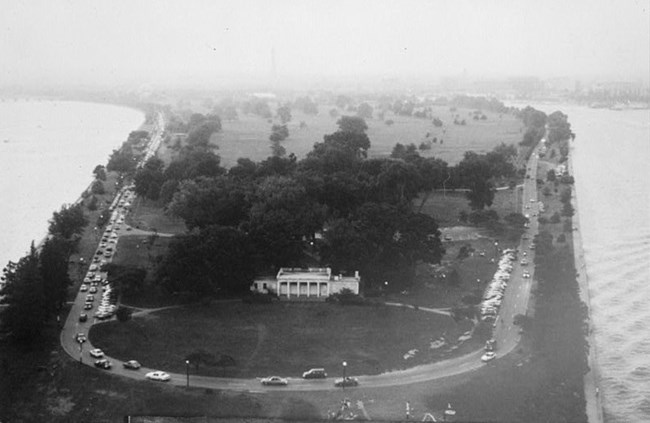Last updated: May 11, 2025
Article
Girl Scout Teahouse on Hains Point

Historic American Buildings Survey, Library of Congress
At first, the Girl Scouts staffed a temporary shelter with tables where they served tea, cold drinks, ice cream, and snacks to travelers. The stand became so popular that even President and Mrs. Harding regularly stopped by. By 1922, the Office of Public Buildings and Grounds asked Congress to provide funding for a permanent structure.

National Photo Company Collection. Library of Congress
But the next year, a new Office of Public Buildings and Public Parks of the Nation's Capital replaced the Office of Public Buildings and Grounds. The new director, Lieutenant Colonel U.S. Grant III refused to renew the Girl Scouts' permit to operate the tea house which expired at the end of 1925. A new concessioner was appointed to operate the facility. That company, which became the present-day Guest Services Incorporated (GSI), continued to operate the Teahouse and offer food and beverage service, including wine and beer beginning in the 1930s. The facility operated during three seasons and closed during the winter. It was especially popular when the cherry blossoms appeared during the early spring.

Historic American Buildings Survey, Library of Congress
The Inn closed by 1962 and reopened as a National Park Service visitors' center until 1967. For nearly two decades, the old Teahouse was the Ecological Services Lab of the National Capital Parks. It fell into disrepair after a large flood of Hains Point in 1985. Although a Historic American Buildings Survey prepared in 1987 noted its historic significance, the Teahouse was demolished soon after.

Historic American Buildings Survey, Library of Congress
Sources for this article include:
Girl Scout Teahouse Historic American Buildings Survey, HABS No. DC-549.
"Girl Scout Tea Houses," The Vintage Girl Scout Online Museum
The Washington Post archives
Girl Scout Teahouse Historic American Buildings Survey, HABS No. DC-549.
"Girl Scout Tea Houses," The Vintage Girl Scout Online Museum
The Washington Post archives
